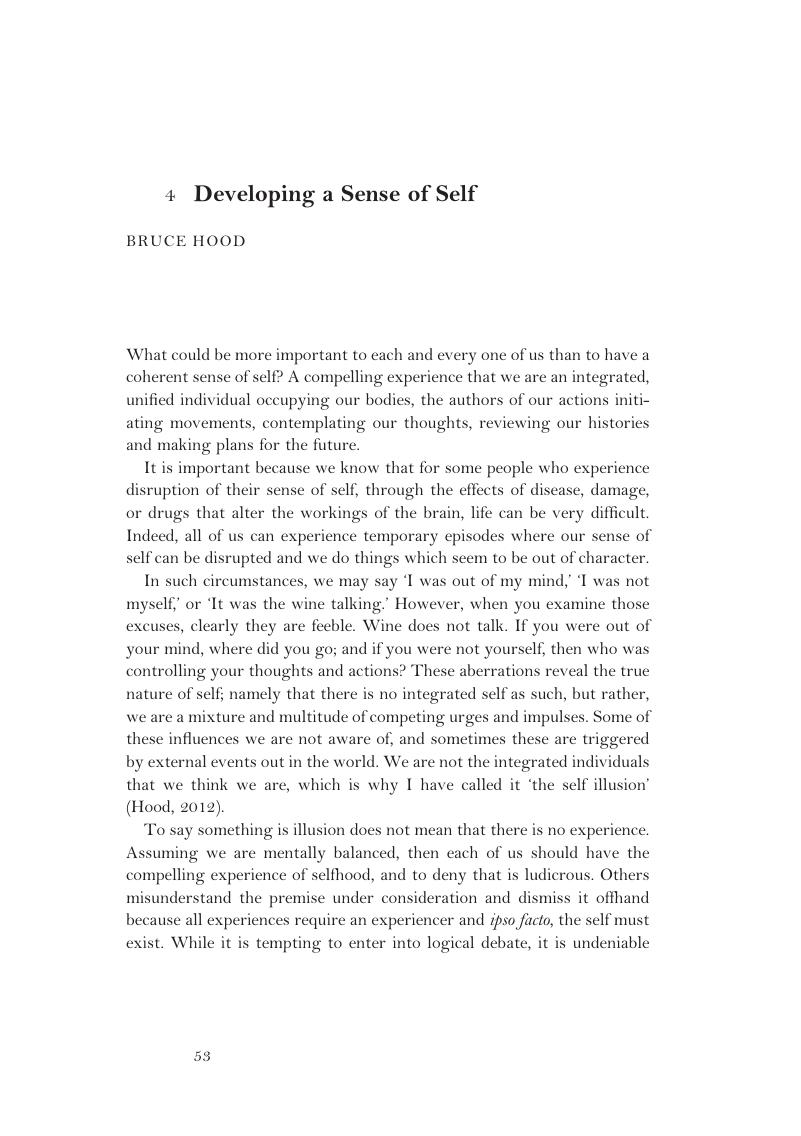Book contents
- Development
- The Darwin College Lectures
- Development
- Copyright page
- Contents
- Figures
- Notes on Contributors
- Acknowledgments
- Introduction
- 1 Animal Development and Reprogramming
- 2 Development of an Athlete
- 3 The Development of Galaxies
- 4 Developing a Sense of Self
- 5 Development of Climate Science
- 6 Biomimicry: Development of Sustainable Design
- 7 Economic Development
- 8 Technology Development
- Index
- References
4 - Developing a Sense of Self
Published online by Cambridge University Press: 03 December 2018
- Development
- The Darwin College Lectures
- Development
- Copyright page
- Contents
- Figures
- Notes on Contributors
- Acknowledgments
- Introduction
- 1 Animal Development and Reprogramming
- 2 Development of an Athlete
- 3 The Development of Galaxies
- 4 Developing a Sense of Self
- 5 Development of Climate Science
- 6 Biomimicry: Development of Sustainable Design
- 7 Economic Development
- 8 Technology Development
- Index
- References
Summary

- Type
- Chapter
- Information
- DevelopmentMechanisms of Change, pp. 53 - 84Publisher: Cambridge University PressPrint publication year: 2018

